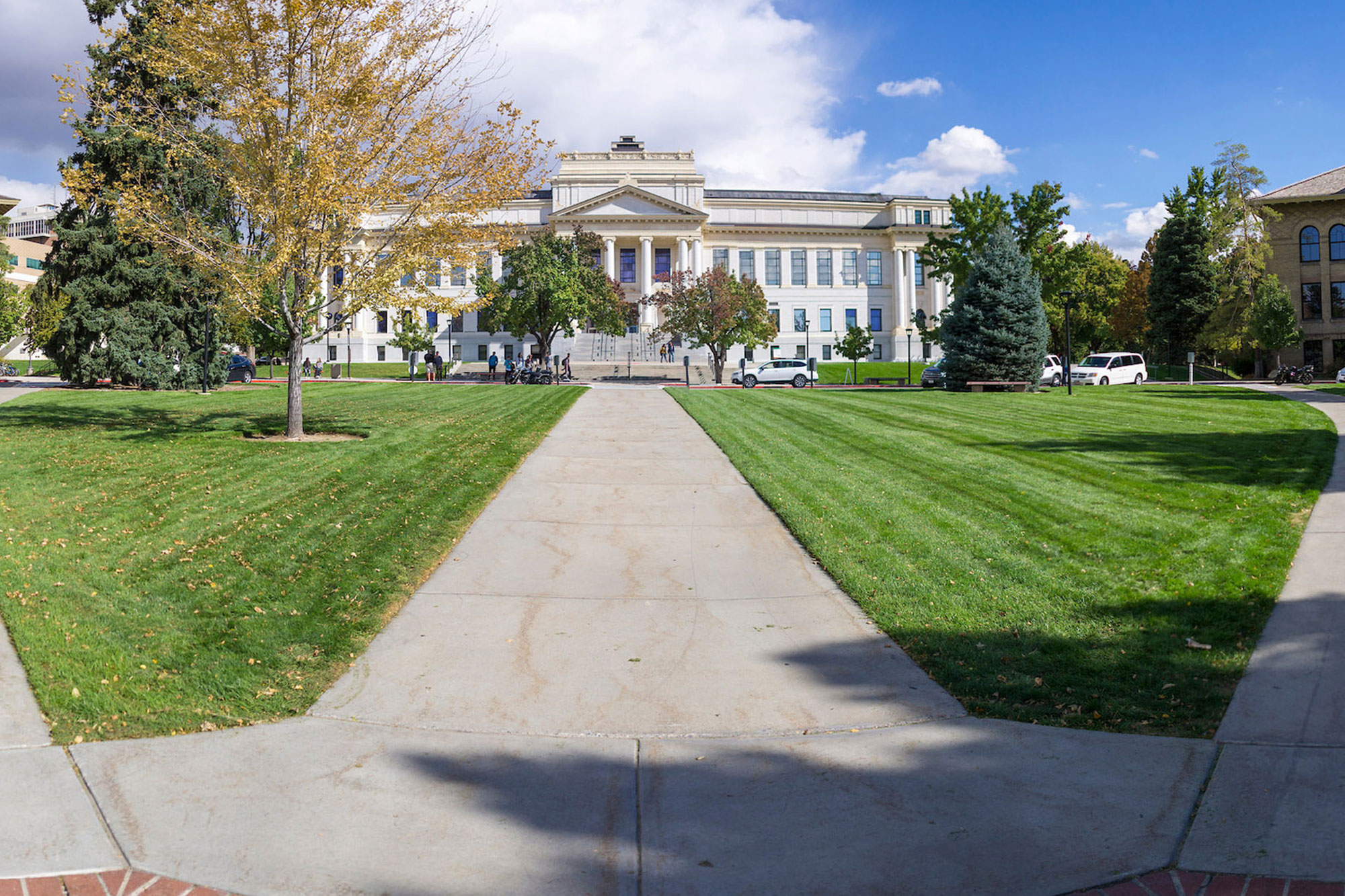
College of Mines and Earth Sciences to merge with College of Science.

The University of Utah College of Mines and Earth Sciences will merge with the College of Science beginning July 1, 2022, a move that will unite well-funded programs, build synergy and cooperation between faculty and create a much stronger base for science and mathematics education at the U.
Deans Darryl Butt of the College of Mines and Earth Sciences and Peter Trapa of the College of Science have worked with university administration and members of both colleges to plan the details of the merger. The College of Mines and Earth Sciences will retain its name and identify as a unit of the College of Science and all faculty, students, buildings and research programs in both colleges will continue in the combined unit.
“Both of these colleges are leaders in student enrollment and research, providing valuable direction on some of the most important issues we face today,” said U president Taylor Randall. “I am confident this union will elevate both programs and provide more opportunities for collaboration and student access to classes.”
“Given the incredibly strong connections and research collaborations between the two colleges already, this proposed merger brings a huge number of opportunities for students and faculty,” said William Anderegg, associate professor in the College of Science’s School of Biological Sciences. “The merger opens doors to new educational programs, student research opportunities and research avenues that should elevate the U’s prominence and impact.”
How it happened
The two colleges have a long history of collaboration, but as they came together in 2018 to begin planning for a new Applied Sciences Building, which will bring together departments from both colleges, the deans and faculty members discussed interdisciplinary collaborations and joint courses of study, leading to the proposal of merging the colleges.
In developing the merger plan, the colleges have met with university administrators and faculty and staff from both colleges. Each department in both colleges conducted an advisory vote from their faculty, with a strong majority of voting faculty being in favor of a merger.
“The alignment of COS and CMES to form a stronger and more synergistic organization would elevate the reputation, and likely national rankings, of the respective programs as the joined faculty become more comparable in size and scope to many peer colleges in the Pac-12,” said Butt. “The union will strengthen the STEM fields at the U, and provide a greater student experience through enhanced advising, tutoring, research opportunities and interdisciplinary programs.”
What will and won’t change
The yearlong Phase 1 of the merger, which begins July 1, 2022, involves integrating non-academic functions of the College of Mines and Earth Sciences, such as accounting and marketing. The deans will work to enhance communication and collaboration in the united college, and continue working with faculty, staff, students and university leadership to streamline the merger.
Students attending classes in either of the colleges this fall likely won’t notice anything different–buildings, faculty and programs will remain as they are. Students working towards existing degrees will still receive those degrees from their respective colleges. No programs will be changed and no staff positions will be eliminated.
Leadership will also look much the same, with department chairs remaining in place, and Butt remaining as dean of the entities comprising the College of Mines and Earth Sciences as the colleges consolidate.
After that, as Phase 2 begins, the unified college will report to a single dean and changes to the governance structure of the college, developed in Phase 1, will be finalized and submitted to faculty, student and administration stakeholders for final approval.
Future endeavors, such as a major in earth and environmental science currently under consideration, will utilize resources from both colleges. But the College of Mines and Earth Sciences will remain as a distinct unit within the College of Science, strengthened by the merger and well-positioned to meet its future mission to the state of Utah as the land grant school of mines.
“We are thrilled to unite with the College of Mines and Earth Sciences, with its tradition of hands-on education and impactful research,” Trapa said. “As a combined college, we’ll be positioned to prepare students for an interdisciplinary world.”
“This is an innovative solution to combine the resources of two historic colleges in a way that preserves the identities and missions of both while elevating them to the top tier of science colleges in the United States,” Butt said.
Get to know the colleges
The College of Science and College of Mines and Earth Sciences are two of the oldest colleges at the U, owing to the early missions of the university to educate Utah’s teachers and the leaders of the mining industry in the state.
The roots of the College of Mines and Earth Sciences extend back to 1901 with the establishment of the State School of Mines. Instruction in earth science and mining engineering goes back even further, to at least 1871. The college’s current name was adopted in 1988 and it currently consists of departments of geology and geophysics, atmospheric sciences, mining engineering and metallurgical engineering (jointly administered with the College of Engineering). The Global Change and Sustainability Center and the University of Utah Seismograph Stations, a network of seismometers throughout the West, are also housed in the college’s Frederick A. Sutton Building. The college has become one of the most research-intensive colleges on campus, with average annual per faculty research awards exceeding $300K. With six majors and four degrees to choose from, students in the college study everything from the nature of snow and ice to processes governing Earth’s processes to the methods and processes for producing critical materials.
The current incarnation of the College of Science was formally organized in 1970 but has roots in science instruction that dates back to the founding of the University of Utah in 1850. It includes departments of mathematics, physics and astronomy, chemistry and the School of Biological Sciences—a progression of disciplines that encompasses the structures and processes of life, the universe and, well, everything.
As one of the largest colleges at the U, the College of Science includes around 2,100 undergraduate students and nearly 500 graduate students, with 143 faculty members. In FY 2021, the college received $36 million in research funding.
In recent years the college has renovated the George Thomas Building into the Crocker Science Center and is planning the renovation and expansion, in collaboration with the College of Mines and Earth Sciences, of the William Stewart Building into the 140,000-square-foot Applied Sciences Building.
Learn more about the College of Science and College of Mines and Earth Sciences.
by Paul Gabrielsen, first published at @theU.
